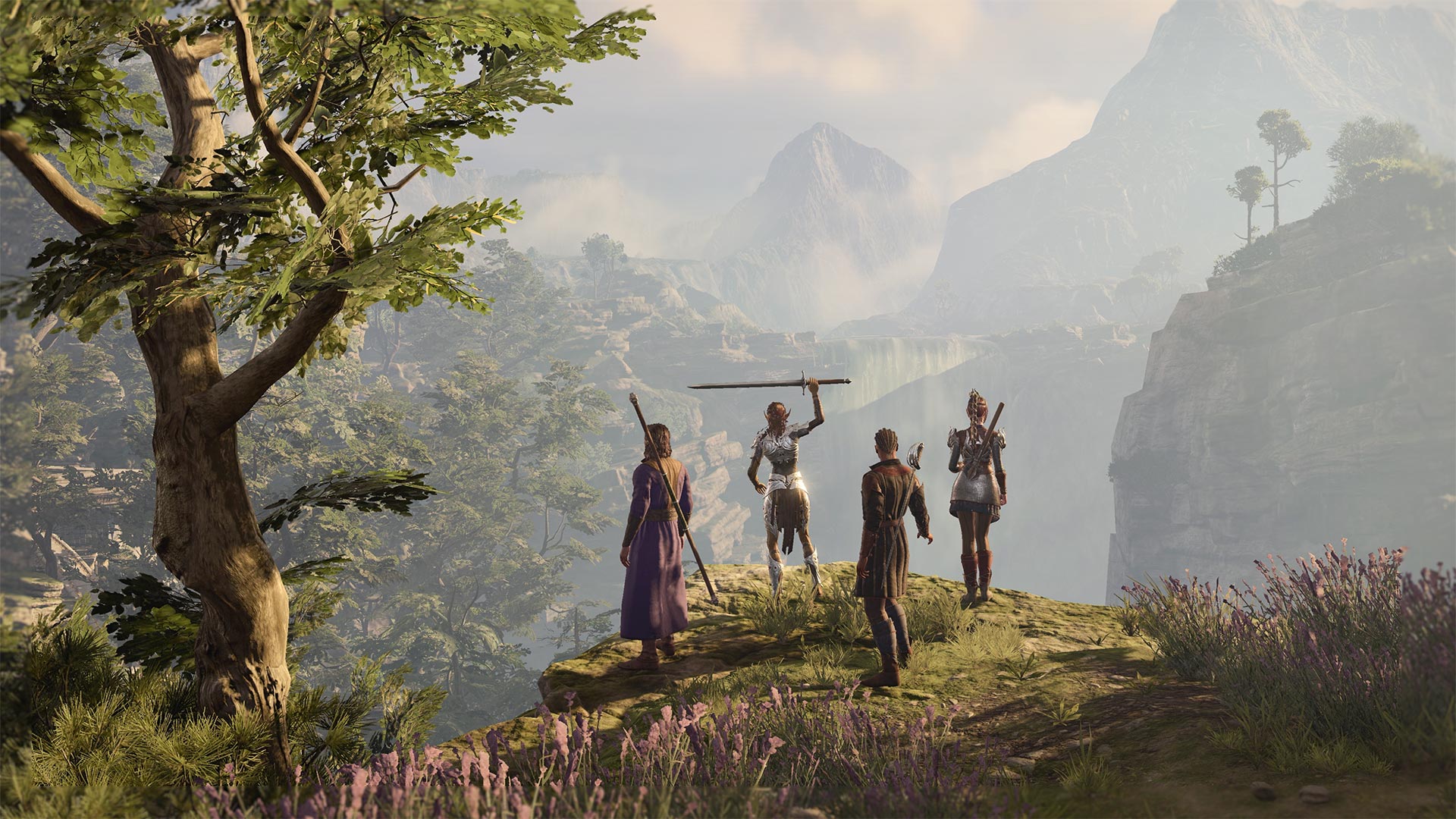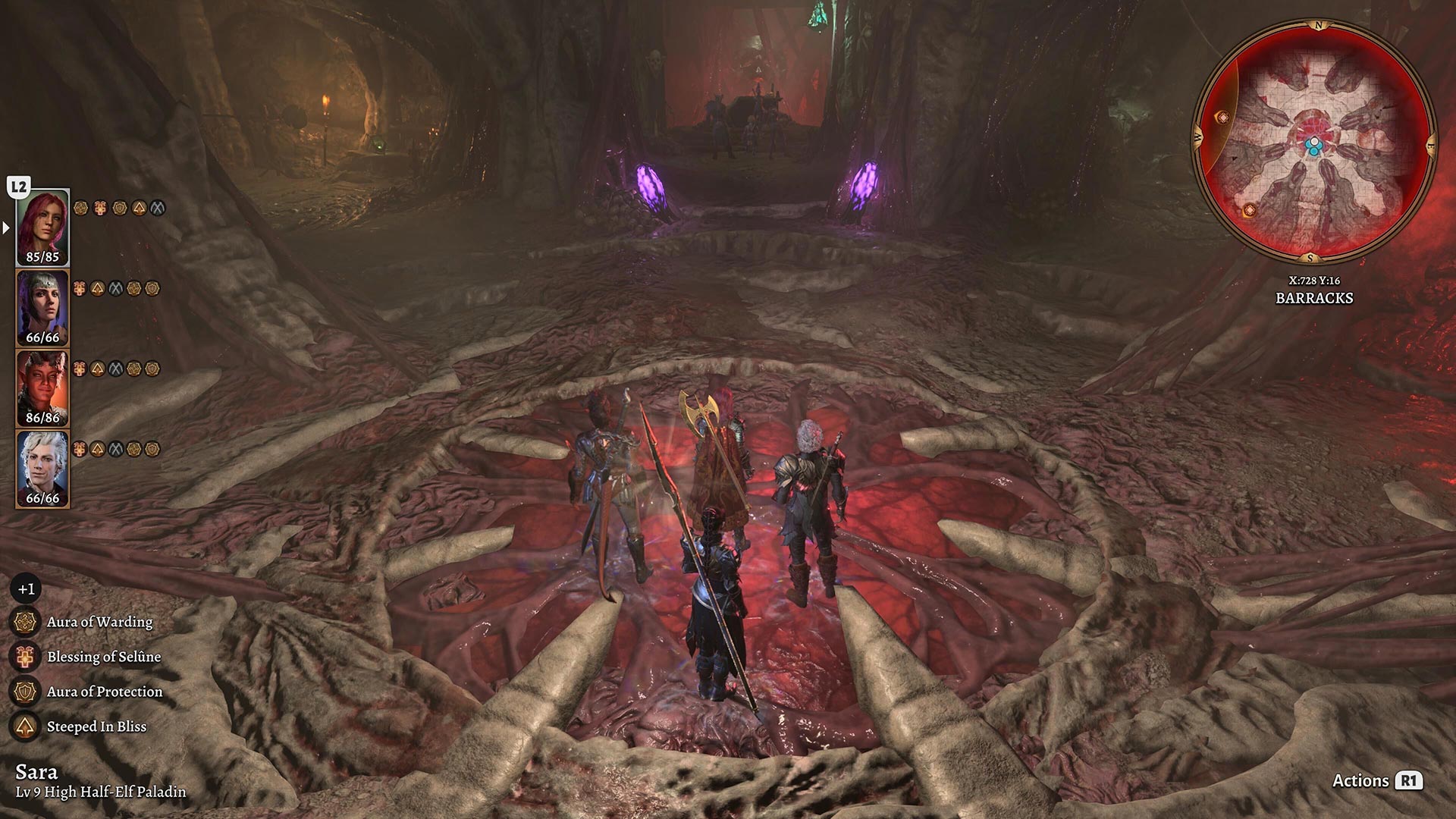I’ve played a lot of role-playing games (RPGs) in my life, but I’ve never really felt the urge to “role-play.”
What I mean by that is the idea of fully embodying a character — you know, coming up with their backstory and/or appearance and only making specific decisions that fit your idea for this person. For many, this is a core appeal of RPGs, particularly of the computer RPG (CRPG) variety, allowing you to live out your fantasies and truly immerse yourself in a given fictional world. I totally get that, but for me, I’ve just never really bothered; it’s the larger hand-crafted stories that generally interest me the most.
When I play something like Mass Effect, I don’t have a firm idea of “what my Commander Shepard would do” — it’s more a fluid thought process in which I’ll make so-called Paragon (“good”) and Renegade (“bad”) choices depending on the situation. (You’d better believe my otherwise largely Paragon Shepard is shoving that one dickhead mercenary out the window in ME2 every single time.) I’ve never quite treated my RPG characters as “self-inserts” the way others do; I’m really just along for the ride.
As I’ve played Baldur’s Gate 3, though, I’ve finally found myself fully “role-playing” my character for the first time in my decades of gaming.
Customization that actually makes a difference
A big part of that comes down to the breadth of options that developer Larian has added to the character creator. On a base level, there are a ton of options for protagonists of all skin colours, genders and sexualities that feel welcoming to players from all walks of life. I always appreciate having all of this because it means I can make someone with beige skin that’s reminiscent of my own half-Brown, half-white complexion. (At the same time, the ability to experience a different gender than my own is also part of what’s always appealed to me about these kinds of features.)
But it’s the ways in which races and their respective backstories play out that really grabbed me. In particular, there are race options for Half-Elf and Half-Orc, and so I went with the former since I’ve always been fond of elves. I loved the idea of having a character who was mixed, even in that seemingly superficial way. If that was the extent of it, I’d have been happy, since I’ve come to not expect much more from games in that regard.
“…I appreciated how it made me own my choices by adding real weight to them.”
A few hours later, though, and something really special happened. When you first arrive at the Emerald Grove, there’s a Tiefling bard named Alfira on a hill who’s singing and playing the lute. She’s struggling to come up with a song to pay tribute to her late teacher, and so you can naturally respond in various ways, including choosing to help her out. In many other games, this support would probably come in the form of more generic words of encouragement, but here, some of the dialogue choices stem from your character’s actual background.
Right away, I was utterly delighted to discover that I could draw from my character’s own Half-Elf background and talk about the unique — and, admittedly, often isolating — feelings of being mixed to inspire her song. It was such a specific thing that I hadn’t seen in a game, and the fact that I could use it to console a grieving woman made it all the more resonant. It also helps that the song that follows, “The Weeping Dawn,” is absolutely beautiful.
Even with all of my grand Baldur’s Gate 3 adventures that followed, including fights with gargantuan spiders, fierce minotaurs, Bloodborne-esque creepy doctors, and demonic rulers, this moment has stuck out to me the most. I even got a nice payoff to this later on at the end of Act Two when I returned to the Last Light Inn after a gruelling fight to rescue a group of Tieflings from Moonrise Tower. Here, I found Lakrissa, one of the people I saved, reunited with Alfira, her partner, and the two of them heaped gratitude upon me.
That all of this came about simply because I talked to a random NPC in an early area is a testament to the strength of Larian’s interconnected narrative, quest and world design. Of course, that conversation with Alfira was far from the only time I got to see my character’s Half-Elf heritage play out, but it was perhaps my favourite example, and I’m sure I’ll find even more as I venture into Act Three.
With great power comes great responsibility
One of the other key ways in which Baldur’s Gate 3 made me feel more attuned to my character is because it actually holds you accountable for your choices. Alongside my Half-Elf background, I went with a Paladin because it felt like it aligned with my predilection towards “good guy” playstyles while also reminding me of Cecil from Final Fantasy IV. From there, you can even pick different Oaths that grant unique perks, so I went with the Oath of the Ancients — which emphasizes the principles of good above all else — for even more virtuousness.
But what I later realized is how the game makes you commit to that Oath. Early in my adventure, I experimented with using the ‘Shove’ action on an enemy by a cavernous ledge to get a leg up in a battle. There I was thinking I was so smart… until the game told me I had lost something and a commanding voice told me I had broken my Oath, thus stripped of my special powers and facing retribution at the end of the day. At first, I was baffled, but then I realized I had, indeed, leveraged foreknowledge to kill someone in cold blood before the fight actually started like I was in The Minority Report.

Therefore, I had to decide whether this was the kind of person I wanted to be. Of course, BG3 players know that you can make a deal with the Oathbreaker Knight to become an Oathbreaker Paladin yourself with different darkness-fuelled powers. The game also gives you the option to pay a hefty fee to restore your Oath if you want to stay on the path of righteousness. But on the whole, I loved how BG3 was pushing me to commit either way. In other games, I might find this to be a frustrating restriction, but here, I appreciated how it made me own my choices by adding real weight to them. As such, I found myself properly role-playing a do-gooder Paladin, especially for the sweet healing abilities that entails.
That’s the way it is
Much has been said about “save scumming” — the act of reloading older saves to attain more desirable outcomes — in Baldur’s Gate 3. Ultimately, my take on that is “Who cares?” As long as it’s not affecting anyone else, let players have fun however they want. I’ve certainly done my fair share of save scumming in games, including in Baldur’s Gate 3, especially where the fate of party members is concerned.
But I’ve also come to appreciate the benefits of not doing that, and it’s only added to the whole experience. Take the aforementioned Moonrise Tower prison break. I now know that, in typical BG3 fashion, there are several ways I could have approached the situation, including using the Warden’s office switches to open the cells or break in from the outside. But hindsight is everything, and so I only thought at the time to give one of the prisoners a cudgel to smash through the walls, rescue the adjacent Tieflings and let them escape to a nearby boat.

The squad’s always gotta be ready.
Of course, the guards soon noticed what was going on, despite my best efforts to distract them, and so a fight ensued — a challenging one, might I add, since I had to protect the fleeing prisoners. All the while, the warden and her powerful troops threw all kinds of magical traps and spectres at us.
While I could have restarted and tried to instigate a fight while the prisoners were safe in their cells, thus making things easier for myself, I ultimately came to appreciate the “by the seat of your pants” thrill of having to carry on when things didn’t go my way. Not only did it make the whole situation more tense and memorable, but it also enhanced my Paladin’s story. Despite the warden’s best efforts, I bravely managed to fend off her crew and successfully save every Tiefling, and all of that hard work made it all the more rewarding to later see Lakrissa and Alfira reunited. Huzzah!
Because really, that sort of messiness is part and parcel of the life of an adventurer. Frankly, it would be less interesting if things went exactly according to plan. Forcing my Half-Elf to try to adhere to a Paladin’s values — in this case, struggling to keep myself and NPCs alive at once — within the chaos makes me feel even more like the hero I set out to be. And really, isn’t that what “role-playing” is all about?
Baldur’s Gate 3 is now available on PC, Mac and PlayStation 5. An Xbox Series X/S version is set to release sometime later this year.
Image credit: Larian
>>> Read full article>>>
Copyright for syndicated content belongs to the linked Source : MobileSyrup – https://mobilesyrup.com/2023/10/28/baldurs-gate-3-role-playing-editorial/?utm_source=rss&utm_medium=rss&utm_campaign=baldurs-gate-3-role-playing-editorial































